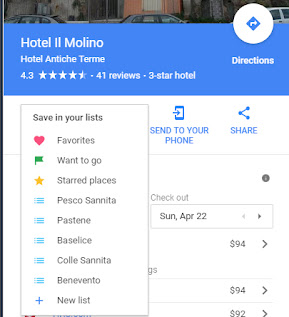 |
| This Bronx building has tons of family tree evidence for me. |
My mom and dad grew up a block apart in the Bronx, New York. They went to the same grade school that was part of the church in their neighborhood.
When I first started exploring my family tree, I was using a website with no search function to view the census. I went page by page through the 1930 census for my parents' neighborhood. Virtually every last name I saw on those pages was familiar to me. They were names I'd heard all my life. Some of them were my relatives, others were my family's friends.
It felt like I was walking through the past.
It turns out there was a lot more family history in those few blocks of New York City than I'd imagined. My mother's grandfather owned her apartment building, so everyone living there was my relative. I'd always known that. But my father's building is turning out to be a genealogy treasure trove.
A Bad Job Changed My Father's Life
My dad was born in Ohio. You'd never know it by this thick New York accent, but he was a product of a small town near Youngstown. When he was three years old, his family moved from Ohio to the Bronx. From what I've heard, my grandfather was not happy working for the railroad or the steel mill in Ohio. He found it to be dirty work, and he hated it.
Grandpa's uncle Giuseppe in the Bronx offered the family a place to live. So my dad's family of four moved in with this uncle at 275 East 151st Street. My mom lived on the next block at 260 East 151st Street.
I have to marvel at the fact that if Grandpa hadn't been unhappy with his job in Ohio, my parents would never have met.
Is Everyone Related?
This past week I've been collaborating on my family tree with a new-found cousin-in-law. While her husband is a DNA match to me and my dad, he's also related to Grandpa's sister by marriage. So…that's a puzzle we're working on.
I quickly found that her husband's uncle Damiano, born in Italy, lived in the same Bronx building as my dad! This was dad's second home in the Bronx: 562 Morris Avenue at the corner of 150th Street—still very close to where my mom lived.
To complicate matters, Damiano had the same last name as another man in my dad's building—the man my Grandpa worked for. All these people:
- my grandfather
- his uncle Giuseppe
- Damiano (my DNA match's uncle)
- the man Grandpa worked for
were from the same small town in Italy. That's no coincidence!
Why Not Look Further?
As I collaborated with my new cousin-in-law, I remembered my dad's lifelong best friend has the same last name as her husband. So I asked my parents a few questions about him and began to dig.
 |
| Dad's best friend's father. |
Dad's best friend Johnny grew up in that same building at 275 East 151st Street. His father Francesco died in 1939, but he became a U.S. citizen a few months before he died. His naturalization papers said he was born in Benevento. (The province or the city? It didn't say.) The papers included the exact date he arrived in America.
When I found his ship manifest, well, do you want to guess where in Benevento he was born? Colle Sannita! The same town as my grandpa and everyone else I've mentioned above. I was able to go back three more generations in my dad's friend Johnny's family tree. They lived in Colle Sannita at least as early as the 1700s. Same as my ancestors.
My dad's two addresses from age three to age 20 are jam-packed with family tree treasures for me.
The best coincidence about my dad's childhood building? In another apartment was a boy several years older than him named Ralph. That boy would grow up to marry my mom's sister. So my dad grew up in the same building as my uncle—his future brother-in-law.
Did your ancestors live in an apartment house in a city? Or a multi-family house in any town? Take a closer look at all the names in that apartment building or home.
Birds of a Feather *Live* Together
Our immigrant ancestors often arrived intending to join a relative or friend. Were they all in the same apartment building? How much does that apartment building have to offer your family tree?













